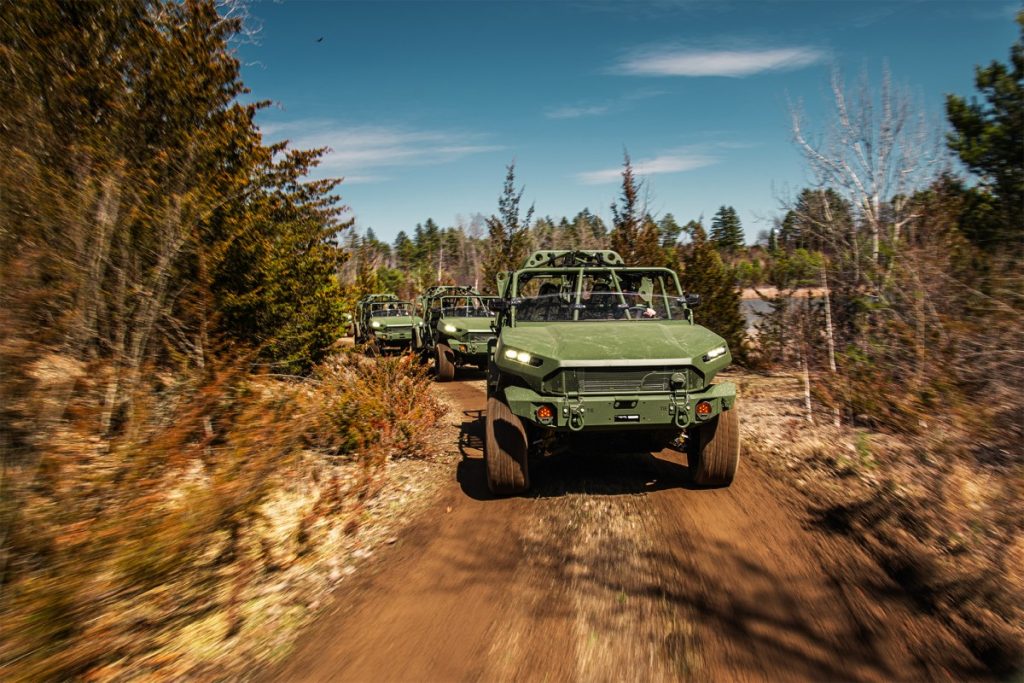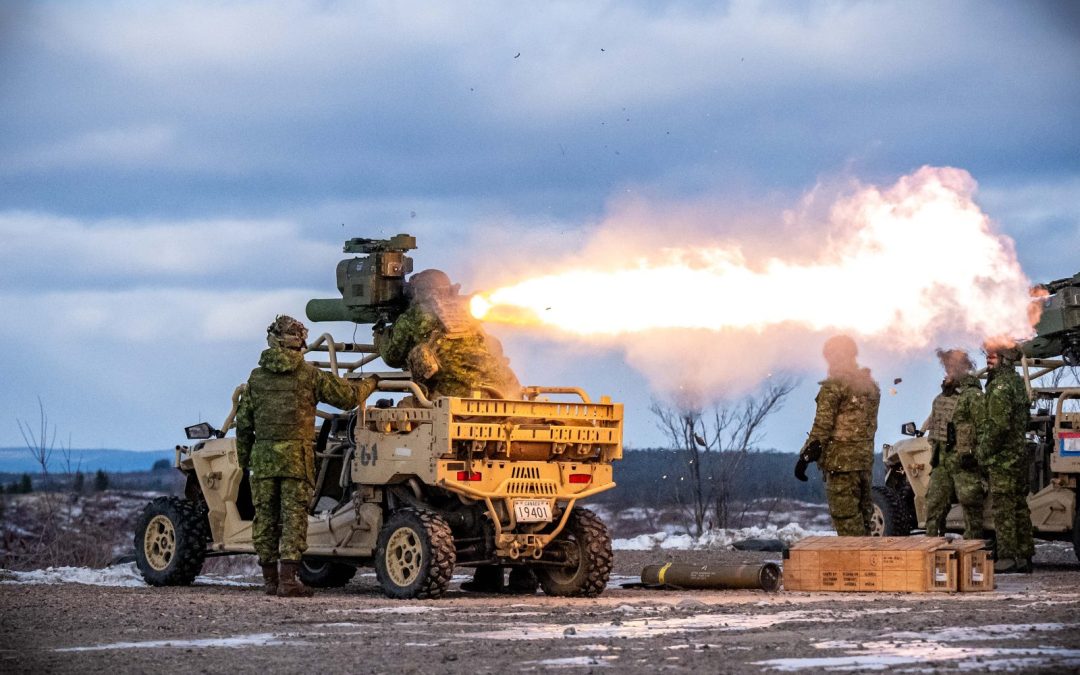by Chris Thatcher
If you are among the handful of companies considering submitting a proposal for the Light Tactical Vehicle (LTV) project, know this: If you don’t have vehicles in your warehouse ready to be shipped in the next months, put the brakes on your submission.
Product availability and ability to meet the Army’s delivery schedule are two of the critical criteria for a rapid procurement project that will acquire up to 108 off-road vehicles for the brigade in Latvia.
Since 2017, the Army has been kicking the proverbial tires on a tactical vehicle for the light infantry battalions, as well as reconnaissance, intelligence, electronic warfare, and other light units — a rugged four-wheel platform capable of transporting dismounted troops and their gear closer to an objective.
Through a “buy and try” in 2017 and 2018, various units have put 36 Polaris MRZR-D utility task vehicles through a variety of scenarios over varied terrain to better understand the Army’s longer-term requirements for what is known as the Light Forces Enhancement (LFE) project. Most recently, members of the 3rd Battalion, The Royal Canadian Regiment (3 RCR), conducted weapons tests, mounting a .50 calibre heavy machine gun, a 40 mm grenade launcher, and a BGM-71 TOW (Tube-launched, Optically-tracked, Wire-guided) heavy anti-tank missile on the platform.
While LFE remains ongoing, the Army has determined it will need light tactical vehicles in Latvia for dismounted sub-units and platoons within the mechanized battalions that will make up a significant portion of the Canadian-led multinational brigade. And, it will need them delivered, with trained operators, for a NATO exercise in November.
Consequently, LFE is now being conducted in two phases. Under the LTV project, the Army will acquire up to 108 vehicles in the coming months, for delivery in early August. The legacy LFE project will then acquire up to 222 more vehicles in the coming years, informed in part by feedback from the units employing the first batch in Latvia.
Both projects are being treated independently and procured under separate budgets, one as part of Operation Uplift for Latvia, and the other through the Army’s normal capital procurement program. The combined value is over $100 million.
“For LTV, we are removing all parts (from the Statement of Requirements) that are not necessary to buy a vehicle that is already in service with allies, NATO or Five Eyes,” said Major Samir Khelil, the project lead for the Directorate of Land Requirements.
“We don’t want a prototype; we don’t want to test a vehicle and then need to do some upgrades. We want one in service and combat proven. If we decide we want some specific additional capabilities or requirements, those will be put into Phase 2 of LFE for the remaining 222 vehicles.”
To have vehicles in Latvia ahead of the NATO exercise in November, the Army will need to take delivery of a significant portion of the 108 LTV fleet by late summer, to then complete final checks and conduct initial operator training — a critical step to understand the limits of the off-road ride — before the platforms are shipped to Europe, he said.
“It will take a month to ship the vehicle overseas … so we’ll need them by the start of August. That is why availability is a top criteria.”
A request for information (RFI) — the third since the LFE project launched — was issued last year with the primary intent of gathering market data on vehicle availability. If a company can meet the project specifications, but only after a modification that could take several months to complete, their vehicle will likely be ruled out because it will not be delivered on time, he added.
Almost 10 companies responded, and one more has come forward with an offer since the RFI closed in December, so Khelil expects at least three or four strong contenders to respond to the request for proposals, released on April 19.

The U.S. Army Infantry Squad Vehicle. Photo: GM Defense
WEIGHT OF EXPECTATIONS
The overall project might now be on two tracks, but the core requirements remain the same, said Khelil. The Army is ultimately seeking 330 vehicles in two variants, a personnel carrier with four to nine seats and a flatbed cargo platform with two to four seats. It will also acquire up to 33 tactical trailers.
The platforms must be large enough to carry ammunition, fuel, water, food, and gear to sustain soldiers for at least 72 hours, but light enough to be transported and airdropped by a CH-147 Chinook helicopter.
“The weight is a very important factor for us,” said Khelil.
“We don’t want to rely on the trailers to mitigate the fact we carry a lot of weight,” he added, noting the difficulty of manoeuvring a vehicle towing a trailer on a dark and narrow track at 3:00 o’clock in the morning.
Weight will be a determining factor as well in whether the project seeks a hardtop for the vehicle. It might provide protection, but it could also mean sacrificing personal gear. “We can have a protective cabin, but that comes with a price — weight,” he said.
Trials in Petawawa over the past 18 months with the MRZR-D and various weapons have given the project team a good idea of platform requirements when firing from a stationary position and on the move. The weapon systems that will be incorporated onto the LTV tranche are still being determined.
“Every weapon has its own challenges,” Khelil observed. “We are looking at different systems, from the C6 (general purpose machine gun) with a calibre of 7.62, to the .50 calibre, the anti-tank guided missile system, and the 40-millimetre grenade launcher.”
The small MRZR has proven to be a “very good buy and try to inform the [LFE] project — we learned a lot of information from that platform,” he said. But it confirmed that the Army “requires something way more robust” for its light troops.
To help determine exactly what the eventual LFE solution should include, the project team will be gathering feedback from units in Latvia on the performance of the LTV.
“We’ll keep an eye on what is happening in theatre,” he said. “We have a liaison officer overseas, and we can [get] information in different ways.

